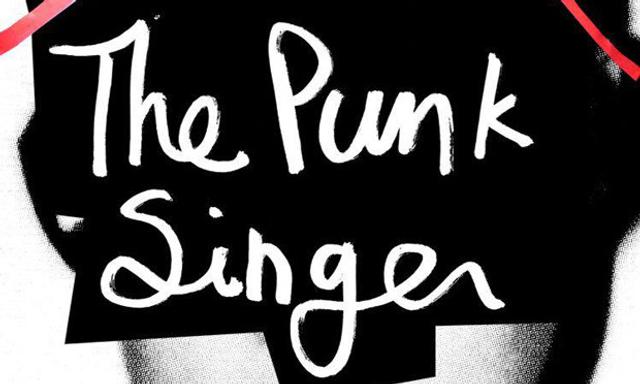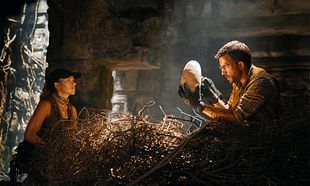Hagiography has no place in a documentary - surely there is another way to tackle a subject without it being a reel of praise-heaping gushes. Take The Punk Singer for instance. If one wasn’t music savvy or knew of Kathleen Hanna, the singer of Bikini Kill and founding member of feminist punk movement Riot grrrl, one might think she was the first woman to front a punk band. There is no mention of Patti Smith, Siouxsie Sioux, The Runaways or The Slits; Joan Jett and Kim Gordon appear sporadically (to offer gushing praise) but the way director Sini Anderson would have it punk began in 1990 when Hanna, the one responsible for the title of that Nirvana song, first stepped on stage.
Blessed with terrific footage, this bubbles with the energy of a Bikini Kill gig; opening with a raucous recording of a pre-Kill Hanna spoken word gig in what looks like a cafe in front of puzzled onlookers, The Punk Singer catches one unaware (what the hell is this?) and from there it’s all about speed, dynamism, vigour. It darts about, gobbling up a snappy one-liner from an interviewee, before rushing around for another. It’s in your face. Hey asshole, etc. Accompanying every image are driving Bikini Kill tunes. You will not be bored.
There’s some insight into her home life (dad was distant, mum was ‘sadistic’), through the art college days, and onto a music career that includes post-Kill outfits Julie Ruin and Le Tigre. After that it’s her marriage to Beastie Boys Adam Horovitz and her struggle with Lyme disease, the reason for her absence from the stage since 2005. In short, what you want to know about Hanna you’ll find it all here.
Like most music docs, however, the love-in gets too much. It starts making excuses. Hanna’s solo Julie Ruin electronic album is a ‘masterpiece’ (turns out electronica is not the antithesis of punk); there is a railing against the violence of male-dominated mosh pits, with one disappointed scenester exclaiming, “We have a right to be hostile too!” (the mooted alternative is that men stay at the back and women mosh safely at the front); and that Hanna is a “feminist who worked in a strip bar, a vegetarian who worked in McDonald’s” is painted as a person that refuses to be defined by a patriarchal society (and not hypocritical).
But look past all that because this is entertaining stuff. There is wonderful footage, terrific tunes, and a highlight of the habitual nonsense a female-driven rock group has to put up with (a USA Today review of a Kill gig couldn’t resist writing about Hanna’s hairy legs) and the everyday sexism women suffer. This is music that makes you think. And maybe riot.















































































